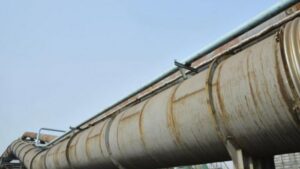There is no harm in helping areas at a locational disadvantage. But the problem arises when it is done using the tariff mechanism

Under the zone-wise unified tariff for natural gas (NG) pipelines effective from April 1, 2023, and announced by the downstream regulator Petroleum and Natural Gas Regulatory Board (PNGRB), consumers will pay a uniform charge for transportation of NG within a tariff zone irrespective of their location. There are three tariff zones defined as per the distance from the gas source — up to 300 km, 300-1,200 km and greater than 1,200 km.
This is a drastic shift from the extant system of tariff determination under which they pay different tariffs depending on the pipeline operator with whom they have contracted for the supply as also the distance from the source. At present, there are nine pipeline operators including public sector majors IOCL, ONGC and GAIL.
The new regime is flawed. It doesn’t follow a rational pricing principle. Instead, it is dictated solely by the government’s intent to help users located in the north, northeast and eastern parts of the country which are far off from the gas supply source. The bulk of the domestic gas comes from the Bombay High and South Bassein region in the west and the KG basin off the Andhra Pradesh coast in the south. Even imported LNG lands at shores at three major terminals — Hazira, Dahej on the west coast and Kochi on the south.
There is no harm in helping areas at a locational disadvantage. But the problem arises when it is done using the tariff mechanism.
The operators have different cost structures due to variations in capital cost, overheads, operating expenses etc. Even the same operator having multiple pipeline networks incurs widely varying costs depending on the pipeline from which it supplies NG. For instance, the cost of moving gas through GAIL’s Jagdishpur-Haldia-Bokaro- Dhamra pipeline (JHBDPL) is Rs 173 per million British thermal units (mBtu), which is much higher than the cost for its other pipelines.
Against this backdrop, setting tariffs at a unified level (the weighted average of the cost of supply from all pipelines/operators) will result in a fortuitous gain for some, whose costs are lower, and a loss for those whose costs are higher. But the regulator says “the difference between the same will be settled between the pipeline entities” thereby ensuring that “they will get the tariff as per their entitlement”.
Put simply, the entities whose cost is less than the weighted average will deposit the surplus amount with a pool whereas others whose cost is more will get compensated for the shortfall from the pool. If every operator has to be paid on the basis of what it costs them, why go for a unified tariff in the first place?
From the users’ perspective also, a unified tariff irrespective of the distance is totally unjustified. It is tantamount to taking money from consumers located near the source and giving it to those who are away. An argument that the latter is handicapped is specious.
To illustrate, let us compare two urea units (gas is used for making urea), one located near the gas source, say in Gujarat, and the other away in Uttar Pradesh (UP). The unit in UP has to pay more for transporting gas (albeit on cost plus principle), but being near major fertiliser consumption areas, it saves on the outward movement of the end product, namely urea. On the other hand, a Gujarat-based unit may save on gas costs, but being away from major consuming areas it has to spend more on the movement of urea. On balance, the playing field is automatically levelled.
The very idea of a uniform transport tariff for gas is erroneous. It is neither fair to the pipeline operators nor to the users. In September 2020, the regulator mooted a single zone/tariff for all users. Then, it shifted to two zones, and now three. This shows that even the government is not comfortable.
There can only be two rational approaches for setting the tariff: (i) the cost-plus principle; (ii) letting the market decide the tariff.
The cost-plus method might work well if the regulator strictly goes by the prescribed norms in regard to factors such as the pipeline-carrying capacity, volume of gas actually transported, capacity utilisation, etc. But that rarely happens as we have seen in the case of the retention price scheme (RPS) for urea which follows the cost-plus principle. Therein, better-performing units are not rewarded just as there is no disincentive for bad performers.
The best way to go is to leave tariff determination entirely to the forces of demand and supply. But this will require hiving off the infrastructure for handling and transportation including the pipeline network from the current owners and vesting it in an independent entity. That entity should make it accessible to all suppliers in a ‘transparent’ and ‘non-discriminatory’ manner.
For areas like the northeast which merit special attention, the government may give area-specific assistance directly.
(The writer is a policy analyst)
https://www.deccanherald.com/opinion/in-perspective/new-gas-pipeline-tariff-is-flawed-1218830.html